Korean cuisine isn’t just about savory dishes like kimchi and bibimbap. It also offers a range of delightful desserts that are both traditional and modern. Discovering these tasty treats can add a new layer to your appreciation of Korean food.
From sweet rice cakes to refreshing beverages, Korean desserts provide unique flavors and textures. You will find a mix of ingredients like red beans, rice flour, and cinnamon, making each dessert a delightful experience. Whether you have a sweet tooth or prefer something subtle, Korean desserts have something for everyone.
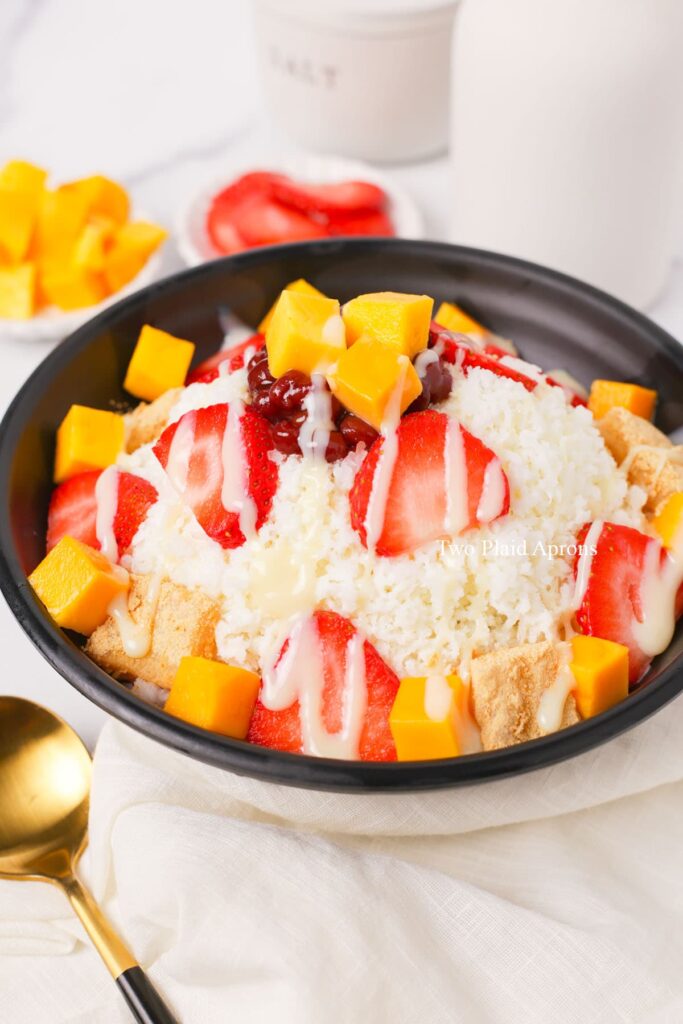
1) Bingsu
Bingsu is a popular Korean dessert, perfect for cooling down on hot summer days. This shaved ice treat often comes with sweet toppings like fresh fruits, red beans, and condensed milk.
To make bingsu, you need to shave ice into a fine texture. You can use an ice shaver, a blender, or a food processor. Once shaved, the ice is topped with various ingredients.
Traditional bingsu uses ingredients like red beans or “pat.” Modern versions might include fruit like strawberries, mango, or even chocolate chips. Some recipes also add chewy rice cakes or jelly cubes for extra texture.
For a creamy touch, mix milk and condensed milk, freeze it, and then shave it into soft flakes. This milk-based bingsu is rich and satisfying. You can customize bingsu with your favorite toppings and enjoy a refreshing, delicious dessert.
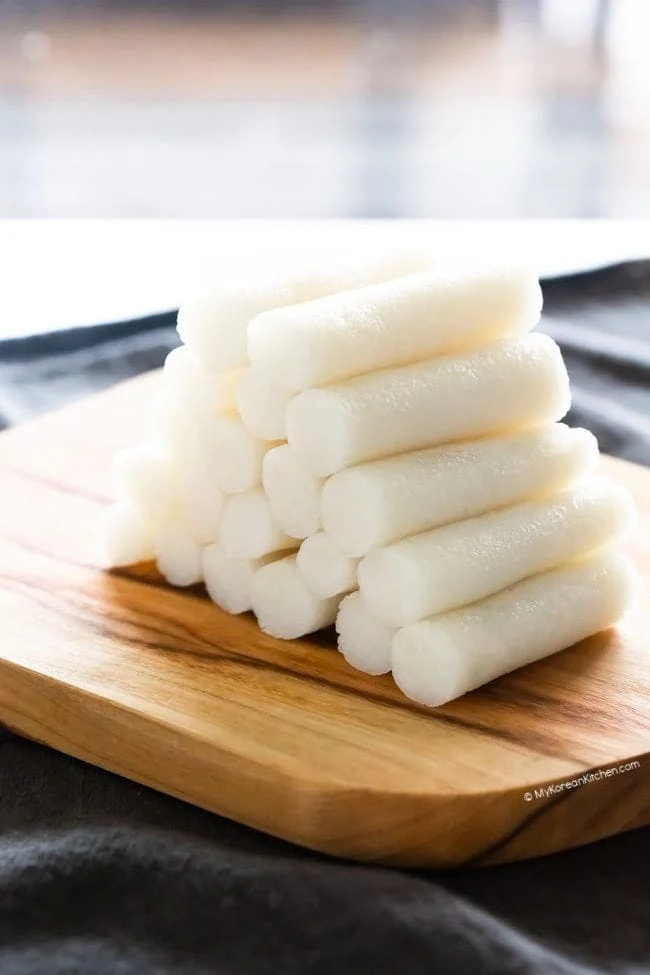
2) Tteok
Tteok are Korean rice cakes made from glutinous or non-glutinous rice. They play a significant role in Korean cuisine and are enjoyed both as sweet treats and savory snacks.
Various types of Tteok exist. Some are steamed, others are pounded, boiled, or pan-fried. Each type has a unique texture and flavor.
Mochi-like tteok, often referred to as chewy tteok, is popular for its soft and elastic texture. It can be found with fillings like sweet red beans or covered in fine powder.
Pan-fried tteok is another popular type. You cook it until lightly crispy on the outside, usually in a bit of oil or butter.
You might also find Tteok served warm with a drizzle of honey or syrup. Some even sprinkle sesame seeds on top.
Tteok is not only a delicious snack but also a staple in many Korean holidays and events. Different regions have their unique varieties, showcasing the rich diversity of this beloved food.
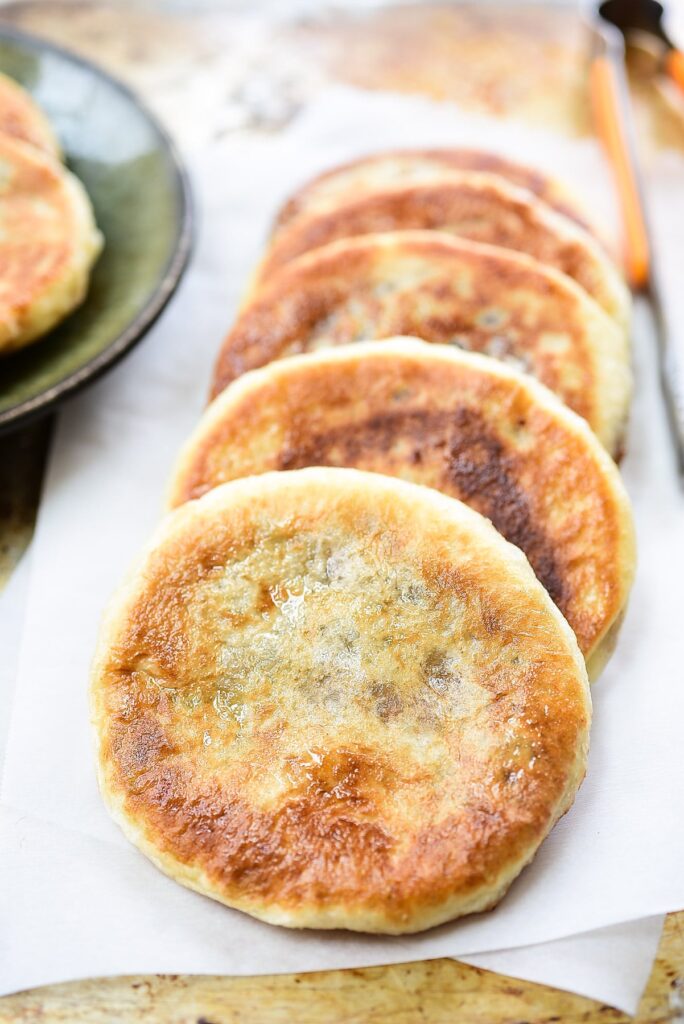
3) Hotteok
Hotteok, also known as Korean sweet pancakes, are a delicious treat you should try. They are filled with a mix of brown sugar, cinnamon, and chopped nuts. This filling melts inside the pancake as it cooks, giving it a gooey, sweet flavor.
To make Hotteok, you need to prepare a yeast dough. Start by mixing warm water, sugar, and yeast. Let this sit until the yeast foams. Then, combine flour, sugar, salt, and warm milk or water with the yeast mixture. The dough needs to rise for about an hour.
Once the dough has risen, you can take small portions and flatten them. Add a spoonful of the sweet filling in the center and then seal the dough around it. Cook the filled dough in a hot, oiled pan until it’s golden brown and crispy on both sides.
Hotteok is often enjoyed as a street food snack in Korea, especially during the winter. The warm, sweet filling and crispy outer layer make it comforting and tasty. You can easily make this dessert at home with simple ingredients and a bit of patience.
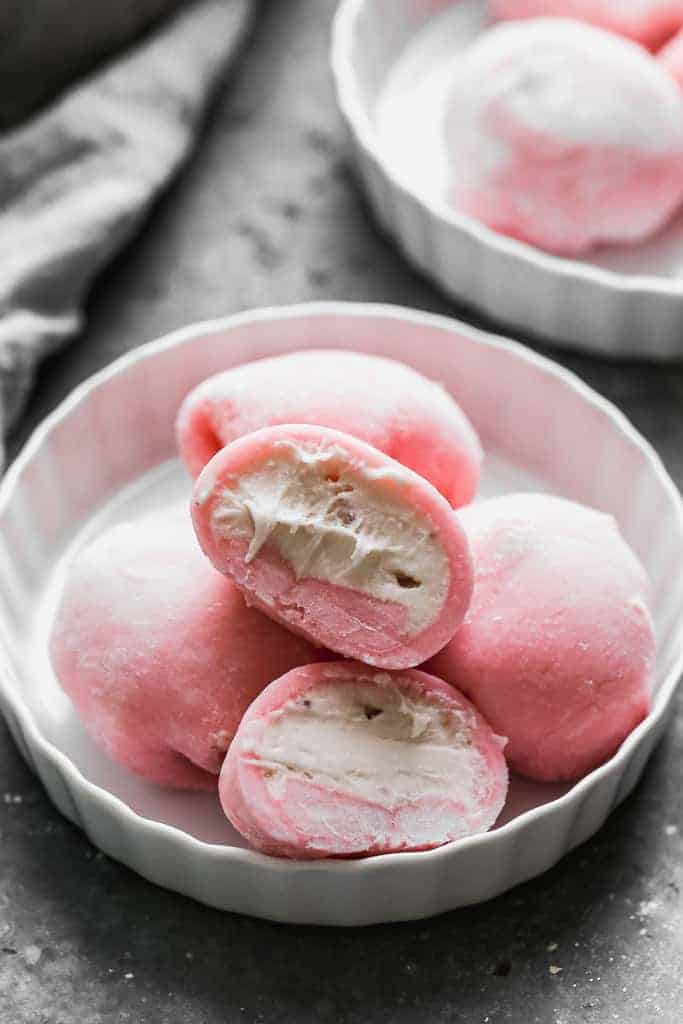
4) Mochi Ice Cream
Mochi ice cream is a popular treat that combines Japanese mochi with creamy ice cream. It features a chewy, rice cake exterior and a cold, sweet interior.
To make mochi ice cream, you first prepare the mochi dough. Combine glutinous rice flour and water, then mix in sugar. Microwave the mixture for a short time, stirring it until smooth and elastic.
Once the dough is ready, shape it into small rounds. Flatten each piece and place a small scoop of ice cream in the center. Wrap the dough around the ice cream, sealing it completely.
These mochi ice cream bites come in a variety of flavors. Common options include strawberry, green tea, and mango.
Store the mochi ice cream in the freezer until ready to serve. Enjoy it right out of the freezer for a cool, chewy dessert that is both unique and satisfying.
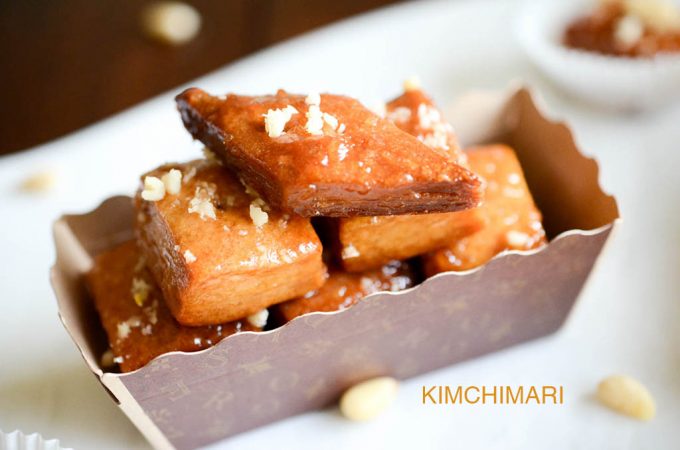
5) Yakgwa
Yakgwa is a traditional Korean honey cookie. It is sweet, sticky, and has a unique texture that melts in your mouth. These cookies are often enjoyed during special occasions or festivals.
To make Yakgwa, you start by mixing flour, sesame oil, and a bit of salt. This forms the base of the dough. The dough is then shaped and flattened with a rolling pin before being cut into small pieces.
Next, the dough pieces are deep-fried at a low temperature. This ensures they cook evenly and get a nice, golden color. Frying Yakgwa slowly helps maintain its softness and chewy texture.
After frying, the cookies are soaked in a syrup made from honey and rice syrup. This gives Yakgwa its sweet and moist taste. Make sure to soak the cookies well to absorb the flavor.
Yakgwa can be found in many shapes, like rectangles or diamonds. Sometimes, people use molds to create flower shapes, which adds a decorative touch.
Enjoy Yakgwa with a cup of tea or as a sweet snack. It is a delightful treat that showcases traditional Korean flavors and techniques.
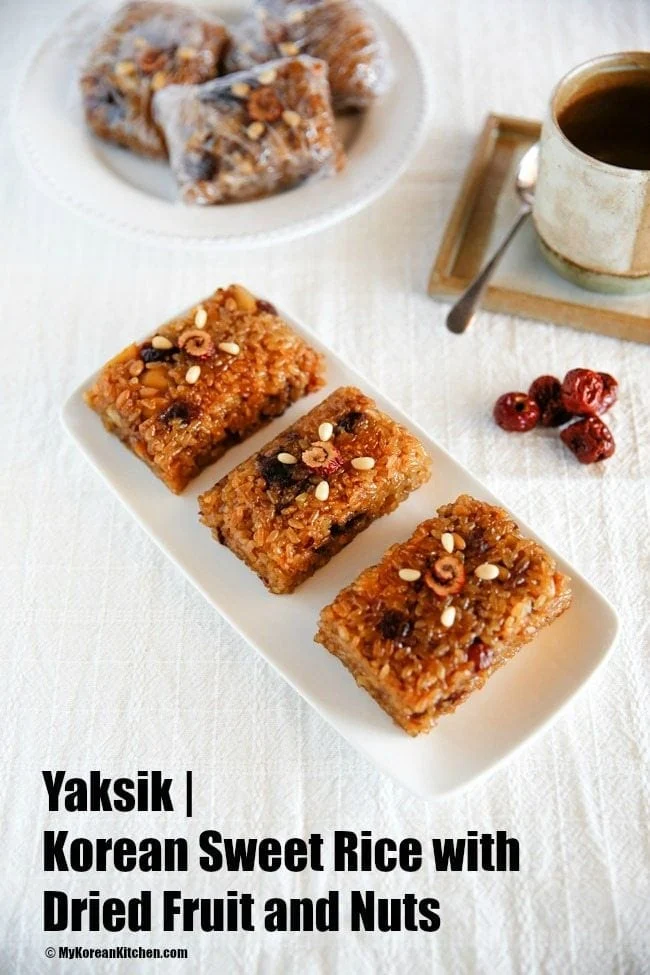
6) Yaksik
Yaksik is a traditional Korean dessert made with sweet rice, dried fruits, and nuts. It is well-loved for its chewy texture and rich, sweet flavor.
To make Yaksik, start by soaking sweet rice in cold water for about an hour. While the rice is soaking, you can prepare the other ingredients like chestnuts and jujubes. Drain the rice and then cook it in an Instant Pot or steamer.
If using an Instant Pot, place the rice inside and pour seasoned water over it. Add chestnuts and jujubes on top, but don’t stir them in. Cook using the “Rice” mode.
If you prefer the steaming method, put the rice in a steamer basket lined with a cotton cloth. Cook over medium-high heat for 40 minutes, occasionally turning the rice with a wooden spoon to ensure even cooking.
After cooking, mix in pine nuts, pumpkin seeds, and sesame oil. These should be added last to keep their texture and color intact.
Yaksik is often enjoyed during traditional Korean holidays and celebrations. It’s not just a treat; it’s also a way to experience a piece of Korean culture and history with each bite.
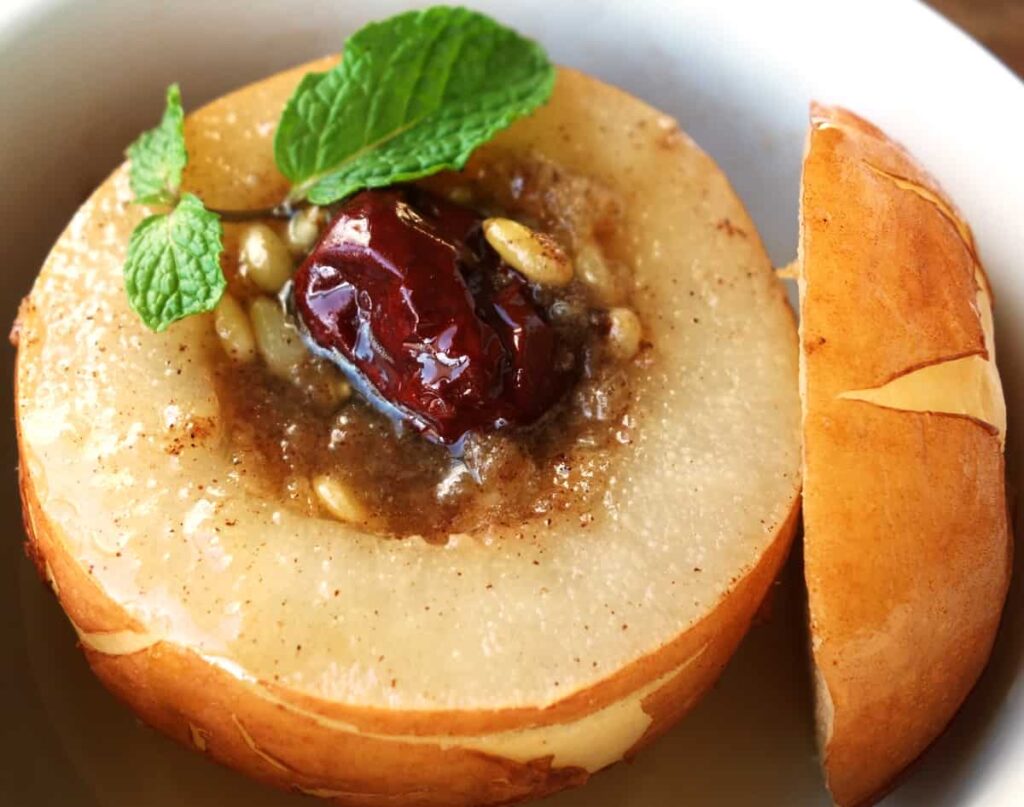
7) Baesuk
Baesuk is a traditional Korean dessert made from steamed pears. It is both healthy and delicious.
To make Baesuk, start by selecting a firm and ripe Korean pear. Cut off the top section to create a lid.
Scoop out the core and seeds with a small spoon. Try to leave enough flesh inside to hold the filling.
The filling usually consists of honey, ginger, cinnamon powder, jujubes, and sometimes pine nuts. Place these ingredients inside the hollow pear.
Replace the pear lid. Place the filled pear in a heat-resistant bowl.
Steam the pear on low heat for about an hour. The pear becomes soft and infused with the flavors of the filling.
Baesuk can be served warm or cold, depending on your preference. It is often enjoyed as a soothing dessert, especially during the winter months.
This dessert not only pleases the palate but is also believed to have health benefits. Ginger is known for its anti-inflammatory properties, while pears are high in fiber and vitamins.
Baesuk showcases the beautiful balance of flavors and textures in Korean cuisine, making it a must-try for anyone interested in traditional desserts.
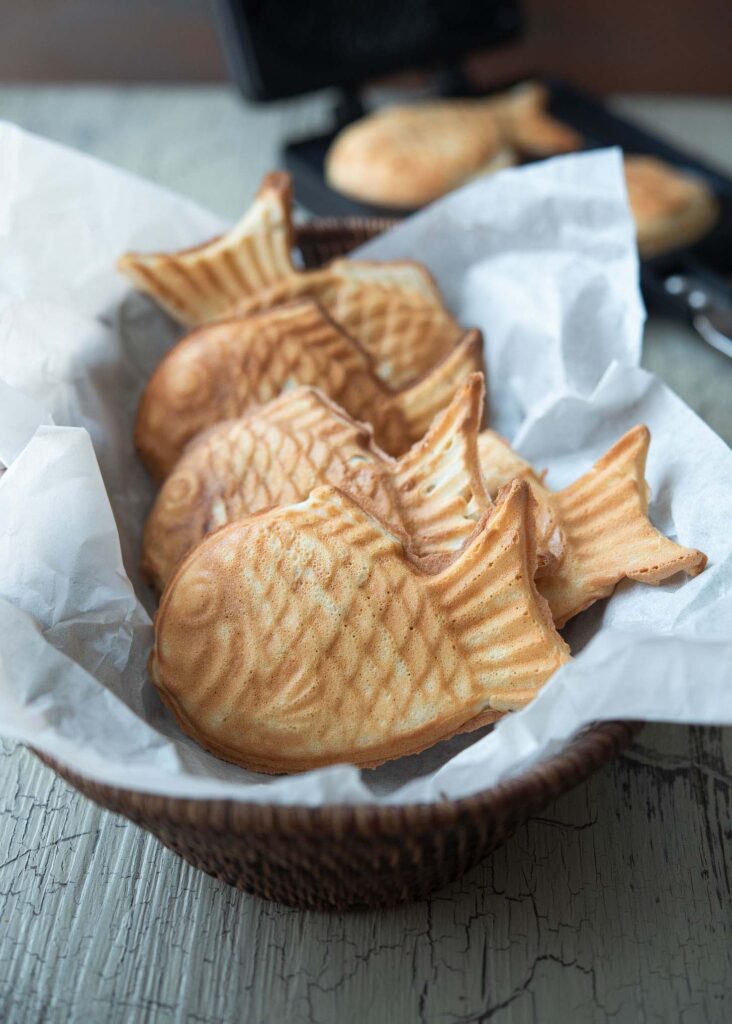
8) Bungeoppang
Bungeoppang is a popular Korean street food snack.
It’s a fish-shaped pastry often filled with sweet red bean paste. You can also find other fillings like custard, chocolate, or cheese.
To make Bungeoppang, you need a special fish-shaped mold.
The batter is similar to pancake or waffle batter. You pour the batter into the mold, fill it partially, add the filling, then cover it with more batter.
Cooking requires flipping the mold to ensure both sides cook evenly. The result is a crispy outside with a warm, gooey filling inside.
It’s a delightful treat, especially during cold weather.
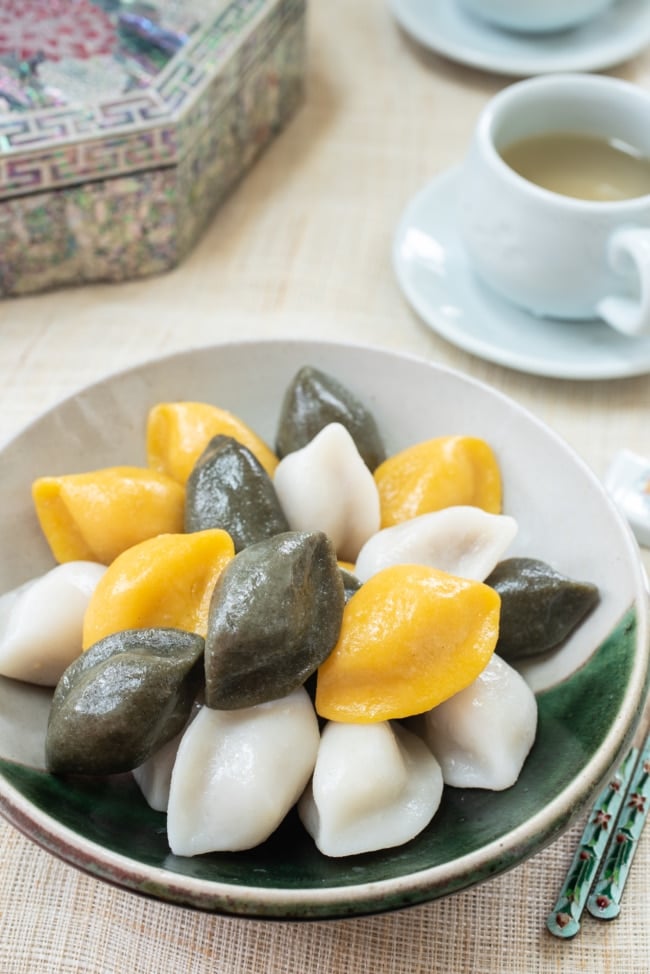
9) Songpyeon
Songpyeon is a traditional Korean rice cake often made during Chuseok, the Korean harvest festival. These delicate, half-moon shaped cakes are filled with sweet fillings like sesame seeds, sweet red beans, or chestnuts.
To make Songpyeon, you start by preparing rice flour dough. Combine rice flour with a pinch of salt and enough water to get the right consistency. Knead it until smooth.
The fillings can vary. Common choices include ground sesame seeds mixed with honey, sweetened red beans, or finely chopped chestnuts.
Once the dough and fillings are ready, take a small piece of dough and shape it into a ball. Press a hole in the center with your thumb, add the filling, and seal it by folding the dough over.
You then steam the Songpyeon. Place them in a steamer lined with pine needles, cheesecloth, or a silicon liner. This ensures the rice cakes don’t stick together. Steam for about 12-15 minutes.
After steaming, brush the Songpyeon with sesame oil to prevent sticking and to add a slight shine. Enjoy them warm or cold.
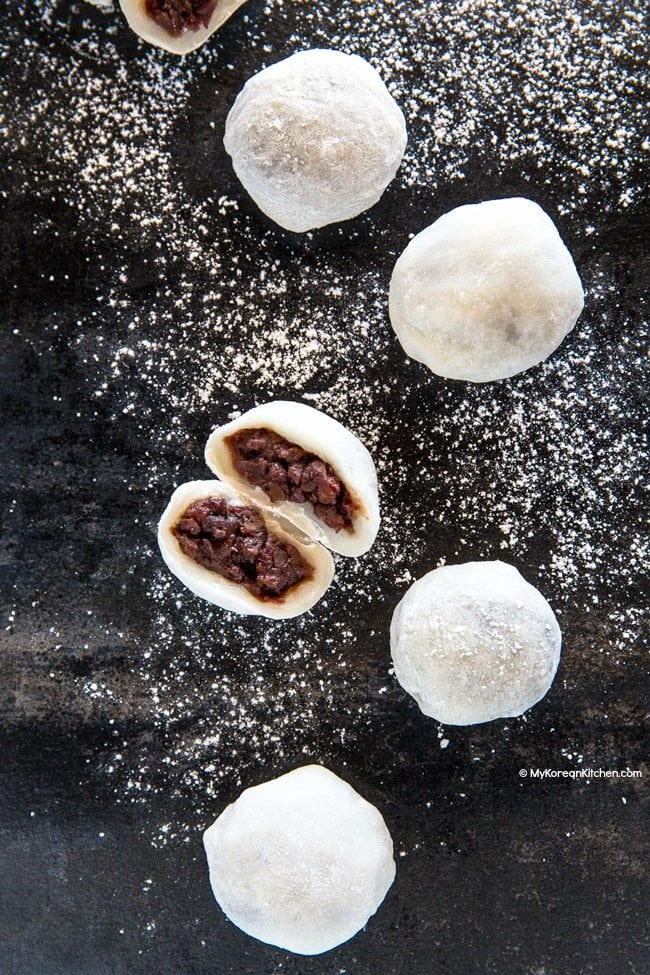
10) Chapssaltteok
Chapssaltteok, also known as Korean mochi, is a popular dessert made from glutinous rice. Its chewy texture resembles Japanese mochi but has its own unique flavors and styles. This treat often comes filled with sweet red bean paste, adding a rich, creamy center. Chapssaltteok is a favorite during Korean celebrations and special occasions.
Making Chapssaltteok is quite simple. You start by mixing sweet rice flour with a bit of sugar, salt, and water. Using natural food coloring, you can give it a beautiful pink hue. The dough is then heated in the microwave until it’s fully cooked and slightly translucent.
Once the dough cools a bit, it’s shaped into small, round pieces. These pieces are then filled with red bean paste. Traditionally, the rice cake is dusted with cornstarch to prevent sticking. The end result is a delightful, chewy dessert with a sweet surprise inside.
Chapssaltteok is not only delicious but also visually appealing. Its pastel colors and smooth texture make it a beautiful addition to any dessert spread. Whether you are making it for a festive occasion or just as a treat, you will find it both rewarding and enjoyable.
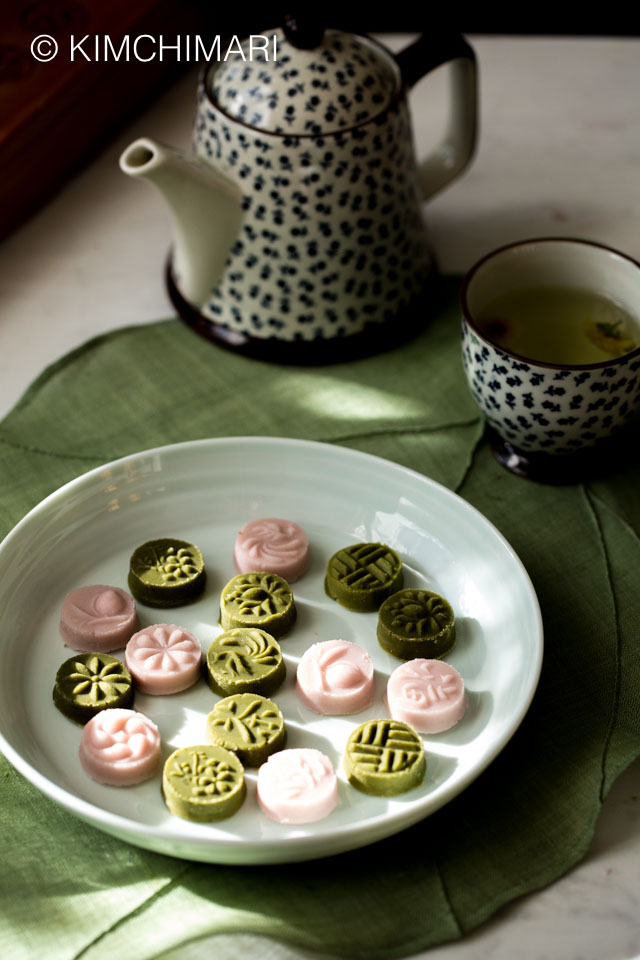
11) Dasik
Dasik are traditional Korean pressed cookies often enjoyed with tea. These cookies have roots in the Joseon Dynasty, where they were part of royal banquets. They are made with glutinous rice flour and natural dyes, giving them beautiful colors.
You typically make dasik by mixing ingredients like sesame seeds, chestnut flour, or mung bean powder with honey. This mix is then pressed into molds to create intricate patterns.
One key step is toasting the glutinous rice flour. You heat it in a skillet until it turns light creamy and smells nutty. This adds a special flavor to the cookies.
Honey is essential for sweetening and binding the ingredients. It helps the cookies hold their shape when you press them into molds. You can find molds in various designs, which add to the beauty of dasik.
These cookies are not only tasty but also visually appealing. They are often served during special occasions like Lunar New Year. Traditional Korean tea ceremonies also feature dasik as a delightful treat.
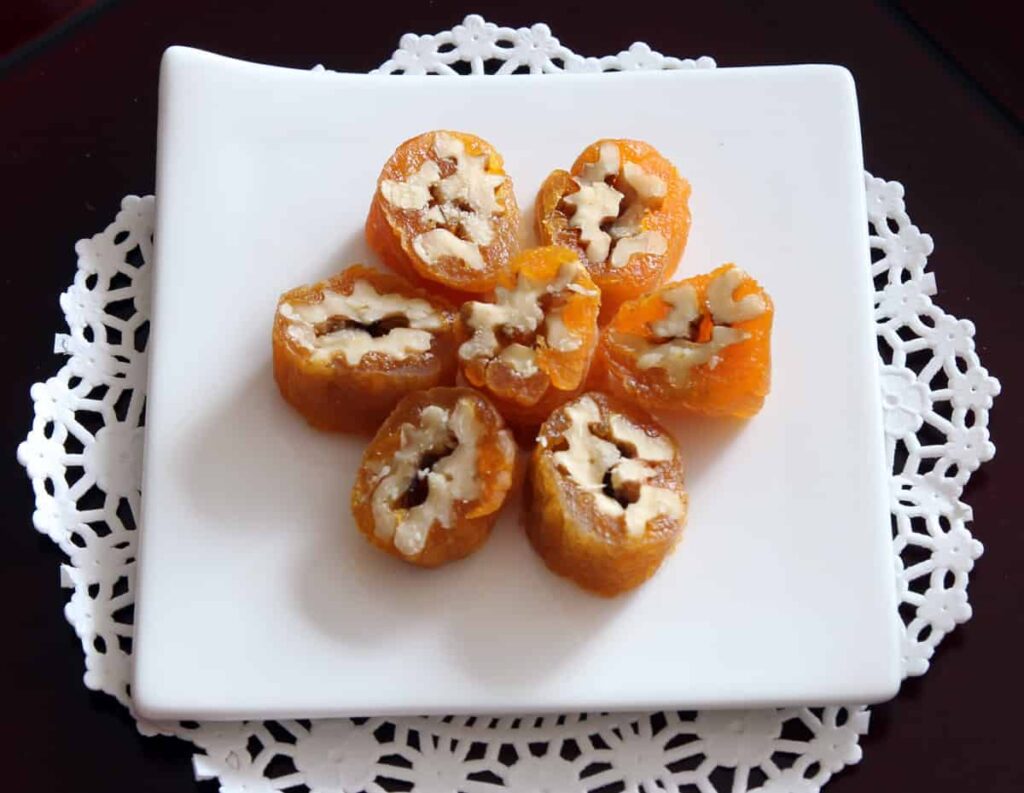
12) Gotgamssam
Gotgamssam is a traditional Korean dessert. It features dried persimmons wrapped around walnuts. This combination creates a unique, chewy texture with a delicious blend of flavors.
To make gotgamssam, start by halving the walnuts. Lay out the dried persimmons with their sticky side up. Place three walnut halves lengthwise with the wrinkly side down. Add three more walnut halves on top.
Next, roll up the persimmon around the walnuts. Wrap the roll in plastic wrap and press it together firmly. Keep it in the freezer to set.
When you are ready to serve, slice the roll into ⅓ inch pieces. Enjoy gotgamssam with hot tea. This sweet and nutty treat is perfect for any occasion.
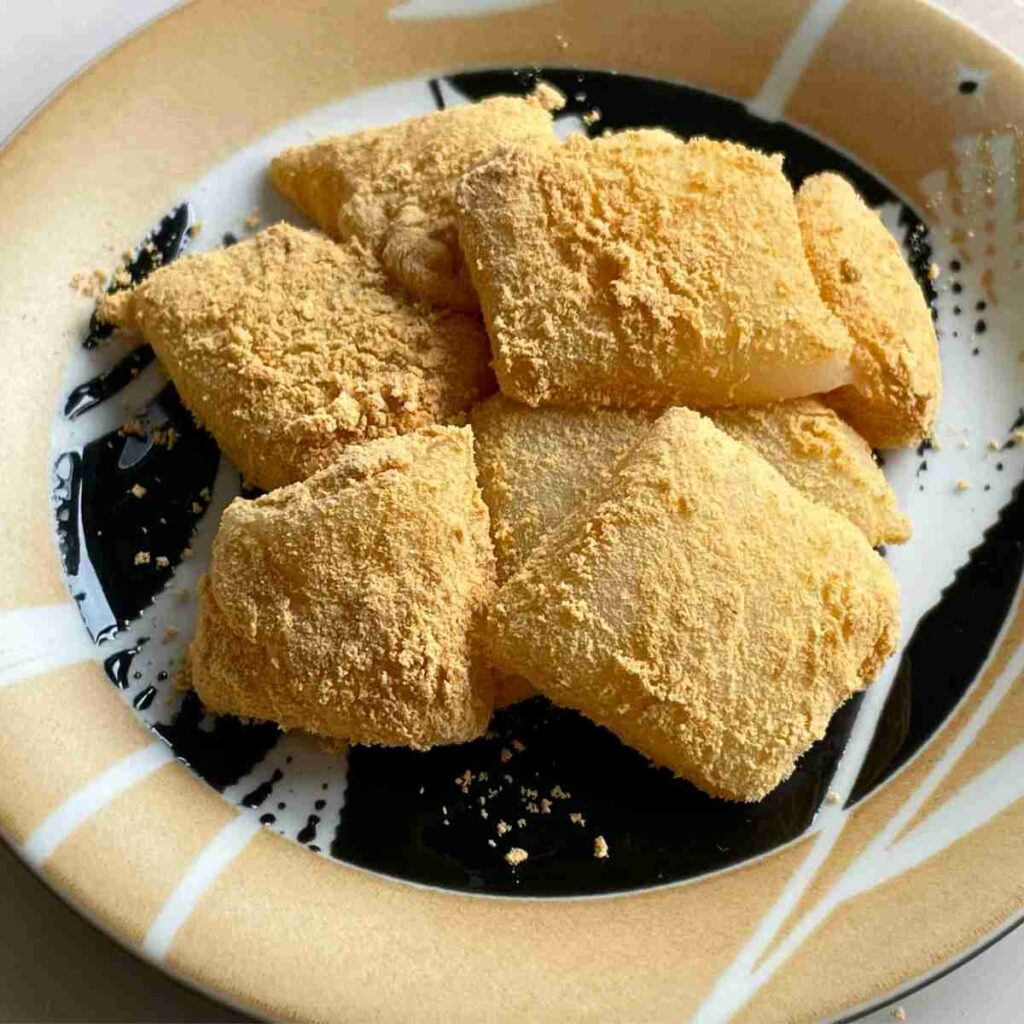
13) Injeolmi
Injeolmi is a traditional Korean dessert made from glutinous rice flour. It’s chewy, sweet, and covered in roasted soybean flour.
To make Injeolmi, you start with sweet rice flour. Mix it with sugar, salt, and hot water to create a dough. This dough is then microwaved for a few minutes until it becomes sticky and elastic.
Once the dough is ready, work it with a wooden spoon to mix it well. Then, roll the dough into a flat, even layer. Sprinkle roasted soybean flour over the dough to coat it.
Cut the coated dough into bite-sized pieces. The soybean flour adds a nutty flavor that complements the sweetness of the rice cake. Injeolmi is often enjoyed as a snack or dessert.
This dish is popular in Korea for its texture and taste. You can find it in many Korean markets and traditional snack shops.
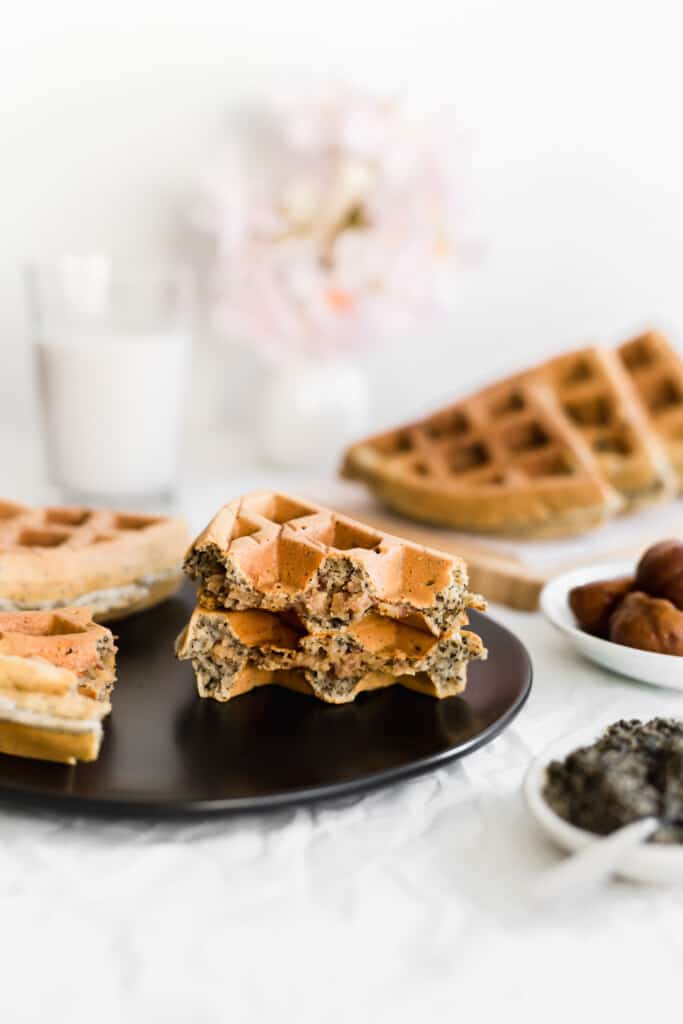
14) Hodugwaja
Hodugwaja, often called Korean walnut cakes, are a traditional pastry from Cheonan, South Korea. These treats were created in 1934 by a couple named Jo Gwigeum and Sim Boksun. They are known for their distinctive walnut shape and delicious filling.
To make hodugwaja, you start by preparing a batter. The batter is usually made from flour, sugar, baking powder, milk, and eggs. This mixture needs to be smooth with no lumps.
Next, you create the filling. The filling is a combination of red bean paste and chopped walnuts. This combination gives the hodugwaja its unique taste.
You need a special walnut-shaped pan to cook hodugwaja. Preheat the pan on both sides and brush it with melted butter or oil. Pour some batter into the pan, add the filling, and cover it with more batter.
Cook the hodugwaja over medium heat until they are golden brown. These pastries are popular as street food and often enjoyed as a snack.
Hodugwaja is a delightful treat that offers a taste of Korean tradition with every bite. You can find them in various markets and bakeries throughout South Korea.
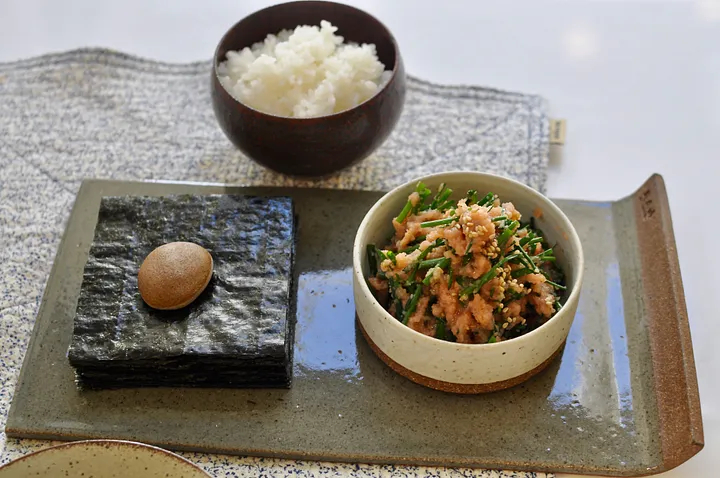
15) Myeongnanjeot
Myeongnanjeot is a traditional Korean dish made from fermented pollock roe. It’s known for its rich, salty flavor and slightly spicy kick. The bright red color makes it a visually appealing addition to any meal.
To prepare Myeongnanjeot, you start by cleaning the pollock roe carefully. Remove any membranes and rinse it multiple times. This helps reduce the fishy odor.
Next, salt is added to the cleaned roe. The mixture is then left to ferment for several days. This fermentation process gives Myeongnanjeot its unique taste.
You can enjoy Myeongnanjeot in various ways. Often, it’s served as a side dish with rice. It can also be used as an ingredient in other Korean dishes, adding depth and flavor.
Making Myeongnanjeot at home can be rewarding, though it requires patience. Fermentation is key to achieving the right taste. If you prefer convenience, you can find it pre-made in Korean grocery stores.
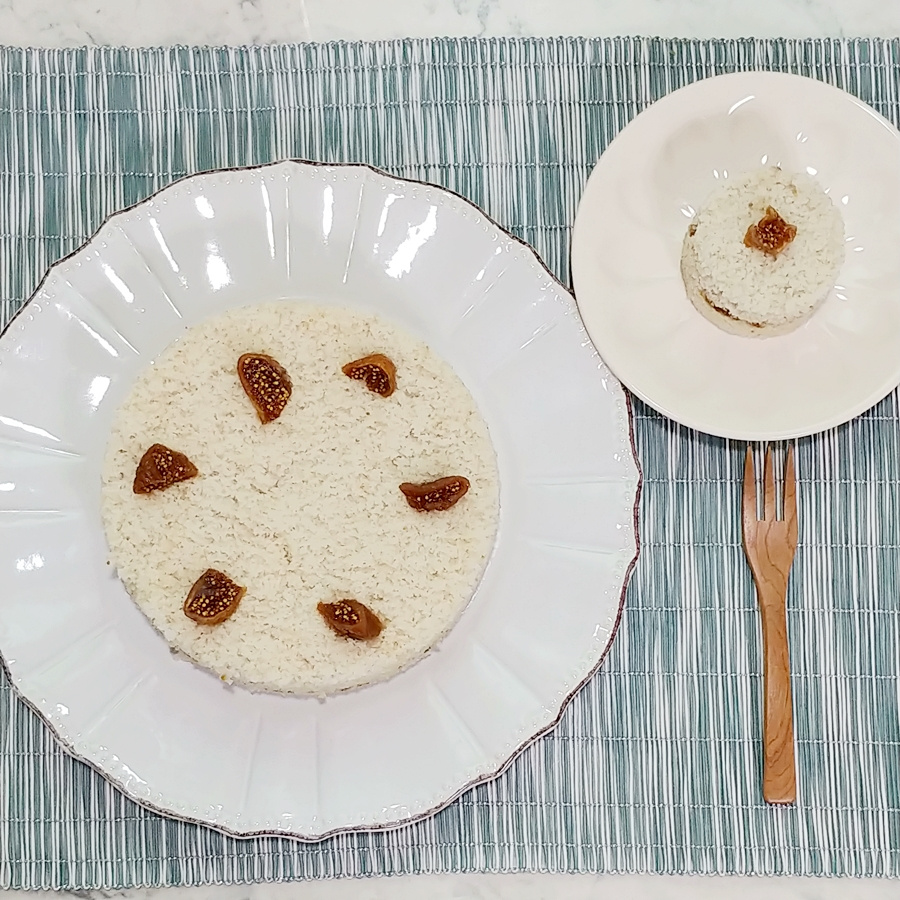
16) Seolgi
Seolgi is a type of Korean rice cake made from steamed rice flour. It is known for its soft and slightly chewy texture.
You may find seolgi in different colors and patterns, often decorated with nuts, fruits, or edible flowers. The rice cake itself usually has a mildly sweet flavor, which makes it a versatile dessert.
Traditionally, seolgi is served during special occasions like birthdays, weddings, and holidays. It is also a common offering in ancestral rituals.
When making seolgi, you typically steam the rice flour and sometimes add a small amount of sugar or honey for sweetness. The process is simple but requires attention to achieve the right texture.
You can enjoy seolgi on its own or pair it with tea. It is often sliced into small pieces for easy sharing.
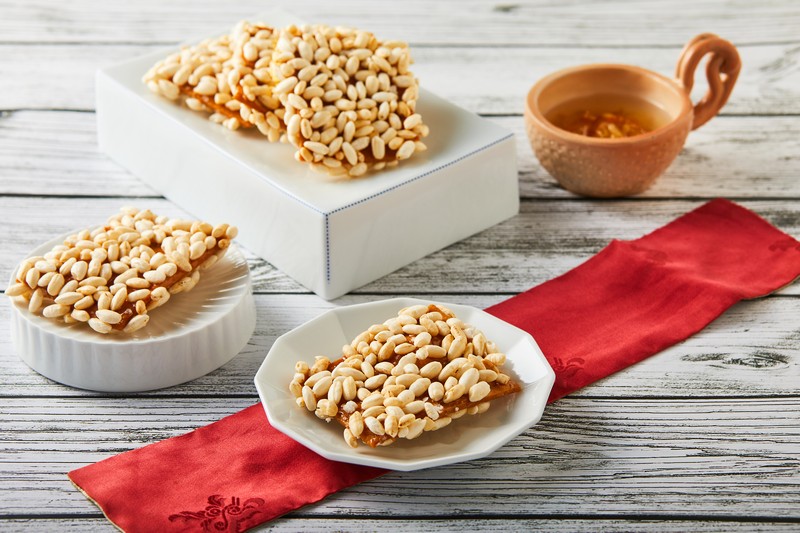
17) Gwajeul
Gwajeul is a traditional Korean confectionery made mainly from flour, honey, and rice syrup. These sweets are often deep-fried, giving them a crunchy texture.
You can find various types of Gwajeul. Some of the most popular ones include yakgwa, maejakgwa, and gangjeong.
Yakgwa is well-loved for its honey flavor and flower shape. It’s often enjoyed during holidays and celebrations.
Maejakgwa is a twisted ribbon cookie typically flavored with ginger and cinnamon. It’s crispy and has a light, sweet taste.
Gangjeong is a puffed rice snack covered in honey or syrup. It’s often mixed with seeds or nuts for added texture and flavor.
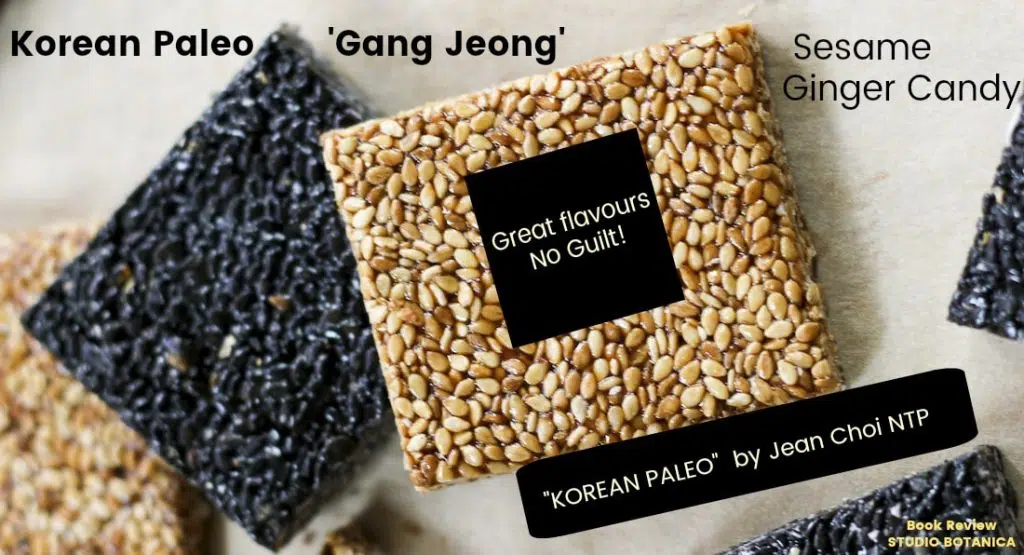
18) Gangjeong
Gangjeong is a traditional Korean sweet treat that is crunchy and delicious.
It is made from glutinous rice flour, which is pressed and shaped into small squares or rectangles. These pieces are then deep-fried until they are crispy.
After frying, they are coated with a sweet syrup made from honey, corn syrup, or sugar.
Sesame seeds, chopped nuts, or puffed rice are added to give gangjeong extra texture and flavor.
You may find gangjeong in various flavors and coatings, making each piece unique.
This snack is often enjoyed during festive occasions like Lunar New Year.
Gangjeong is light yet flavorful, perfect for when you want something sweet and satisfying.
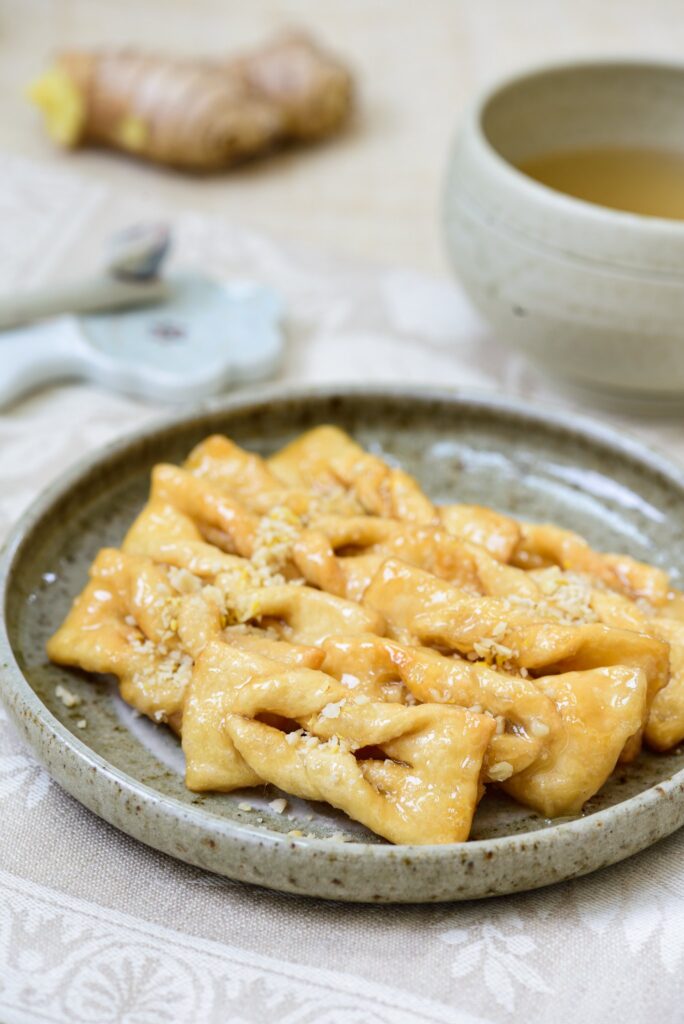
19) Maejakgwa
Maejakgwa is a traditional Korean cookie made with ginger-flavored dough. These cookies are popular during holidays and special occasions.
To make Maejakgwa, you’ll need all-purpose flour, ginger juice, sugar, salt, and water. Mix these ingredients together to form a dough. This dough is then rolled out and cut into strips.
Each strip of dough is folded and twisted into a ribbon shape. The shaped dough is then deep-fried until it turns a golden yellow.
After frying, the Maejakgwa is dipped in a simple syrup. This gives the cookies a sweet and crunchy taste. Sometimes, they are sprinkled with chopped nuts for added texture and flavor.
Maejakgwa offers a unique combination of ginger flavor and crispy texture. These cookies are a delicious treat that you can enjoy year-round.
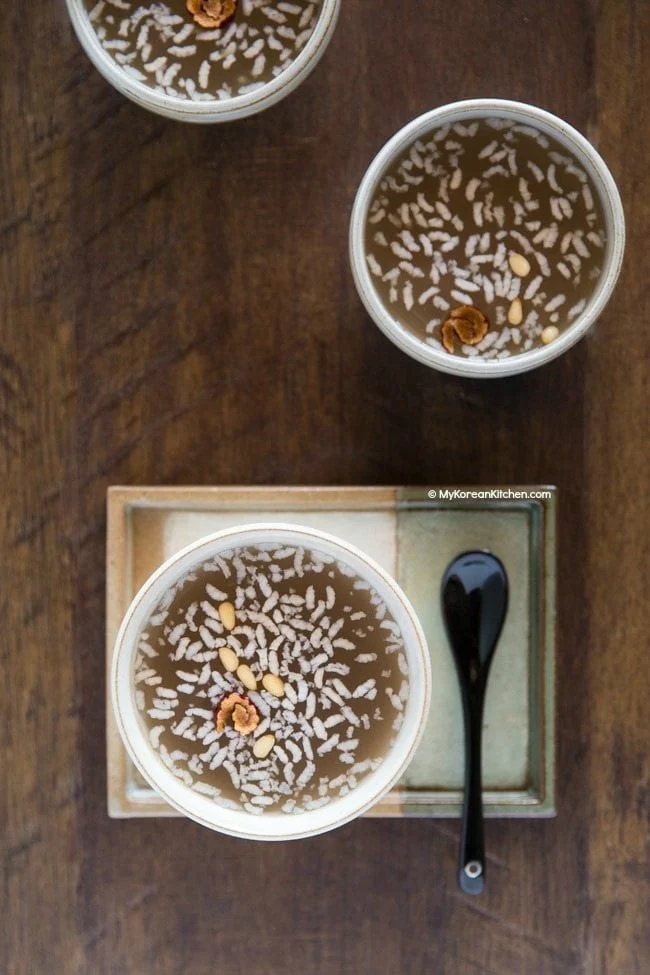
20) Sikhye
Sikhye is a traditional Korean sweet rice drink enjoyed by many. It is often served as a refreshing dessert, especially during festive occasions.
Made primarily from malt barley, rice, and sugar, Sikhye has a sweet taste with a hint of grain. The barley is soaked in warm water to release enzymes, which help to convert the starch in rice into sugars.
After the barley water is prepared, it is filtered and mixed with cooked rice. The mixture is left to ferment slightly, allowing the flavors to develop. Once the fermentation process is complete, sugar is added, and the drink is boiled briefly.
To serve, you chill the Sikhye in the refrigerator. Pour it into a glass and add a few grains of the reserved rice. You can also garnish it with pine nuts or dried jujube slices for extra flavor.
In Korea, Sikhye is often enjoyed at the end of a meal to aid digestion. Its unique taste and mildly sweet flavor make it a delightful end to any dinner.
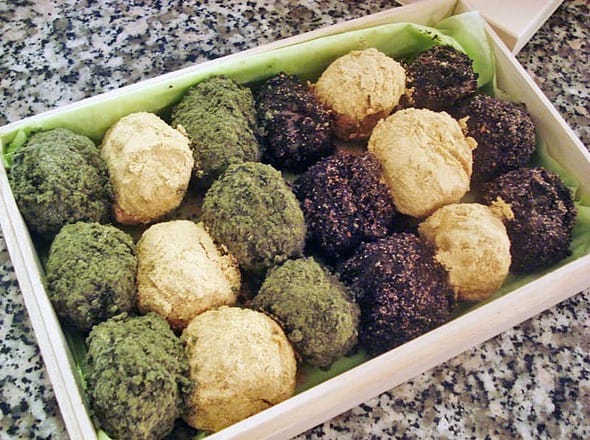
21) Kyungdan
Kyungdan, also known as Korean sweet rice cake balls, are a delightful traditional snack. These rice cake balls are made from glutinous rice flour, which gives them a chewy texture.
You start by making a dough with rice flour, sugar, and boiling water. Once you have your dough, you can shape it into small balls.
Inside each ball, you often find a sweet filling. Red bean paste is a common filling, adding a sweet and slightly earthy flavor.
The balls can be coated in various toppings. Popular choices include black sesame seeds, soybean powder, and crushed pine nuts. These toppings add different flavors and textures to the Kyungdan.
Cooking Kyungdan is simple. You boil them in water, and when they float to the surface, they are done. They’re easy to make and delicious to eat.
Kyungdan makes a fantastic dessert or snack, offering a combination of chewy, sweet, and nutty flavors. You can enjoy them with a cup of tea or share them at a gathering.
Historical Background of Korean Desserts
Korean desserts have a long history, rooted in traditional ingredients and evolving through various influences over time. The historical context enhances appreciation for these delightful treats.
Traditional Ingredients Used
Traditional Korean desserts rely heavily on natural and locally sourced ingredients. Glutinous rice and red beans are staples, used in many classic dishes like tteok (rice cakes) and patbingsu (shaved ice with sweet toppings).
Other common ingredients include honey, fruits, nuts, and stone-ground flour. These elements contribute to the unique textures and flavors that define Korean sweets. Seasonal fruits like persimmons and chestnuts are often incorporated, adding a rich, natural sweetness.
Additionally, fermented ingredients such as soybean paste and rice wine sometimes play a role, showcasing the traditional fermentation techniques that are central to Korean cuisine.
Evolution Over Time
Korean desserts have evolved significantly, influenced by various historical events and cultural exchanges. Initially, many desserts were reserved for royalty and special occasions, given their labor-intensive preparation and expensive ingredients.
With modernization and globalization, these treats became more accessible. For example, dalgona coffee, a modern twist on the traditional candy, gained worldwide popularity.
Additionally, the influence of neighboring countries is evident in some multicultural adaptations. Japanese mochi inspired Korean rice cakes, and Western pastries have been integrated, creating a fusion of flavors and techniques.
Today, traditional Korean desserts continue to be enjoyed both in their original forms and through innovative, modern interpretations.
Culinary Techniques in Korean Dessert Making
Korean desserts are known for their unique preparation methods and delicate flavors. Two key techniques are the art of rice cake making and the fermentation processes involved in creating some of these traditional sweets.
Art of Rice Cake Making
Rice cakes, or tteok, are integral to Korean desserts. The process starts with soaking glutinous rice, then grinding it into a fine powder. The rice is then steamed until it becomes sticky and pliable. This gives the rice cake its chewy texture.
To shape the cakes, you might use molds or hands, often adding fillings like sweet red bean paste. They come in various shapes and colors, often symbolizing meaningful events. For instance, songpyeon is semicircular and traditionally made for Chuseok (Korean harvest festival).
Adding ingredients like mugwort or pumpkin can impart unique flavors and colors. The presentation and flavor combinations make rice cakes both visually appealing and delightful to eat. Your choice of ingredients and techniques can greatly influence the final product’s texture and taste.
Fermentation Processes
Fermentation plays a vital role in some Korean desserts. A prime example is makgeolli, a traditional rice wine that doubles as a drink and dessert. Fermentation helps develop complex flavors that are not achievable through other means.
Similarly, yaksik is a sweet rice dessert that includes fermented ingredients like honey and soy sauce. It features steamed rice mixed with healthy ingredients like jujubes, chestnuts, and pine nuts. This combination offers both nutritional value and a distinct taste.
The fermentation process can take several days. Conditions such as temperature and humidity are carefully controlled. Fermented desserts often boast a tangy sweetness and are believed to offer health benefits, thanks to probiotics generated during fermentation.
Modern Twists on Classic Korean Desserts
Modern spins on traditional Korean desserts introduce new ingredients and creative presentations. These innovations add unique flavors and styles to beloved treats, while also offering visually appealing presentations.
Fusion Flavors and Styles
Korean desserts now often blend with ingredients from other cuisines to create fusion flavors. For example, you might find chapssal donuts filled with Nutella instead of the traditional sweetened red bean paste. This adds a chocolaty richness to the chewy texture of the rice donut.
Another example is green tea bingsu, which combines the traditional shaved ice dessert with matcha, a Japanese powdered green tea. This adds a slightly bitter taste that balances the sweetness from the condensed milk and toppings like mochi and red beans.
Korean pastries such as croissant taiyaki bring together the French croissant and Japanese taiyaki, a fish-shaped cake usually filled with sweet red bean paste. The croissant dough makes it flakier and adds layers of buttery goodness. These innovative combinations make classic desserts more varied and exciting.
Innovative Presentations
Modern Korean desserts are not just about new flavors but also stunning presentations. Take dalgona coffee, for instance. This whipped coffee drink has become famous for its smooth, frothy top layer that sits elegantly over milk, creating a drink that’s as visually appealing as it is tasty.
Another example is the flower-shaped hotteok. Traditional hotteok are pancakes with a sweet filling, but the modern version may be intricately shaped and decorated to resemble flowers, making them perfect for social media and special occasions.
Dessert cafes often serve deconstructed desserts, breaking down the classic elements of treats like bungeoppang (fish-shaped pastry) into separate components on a plate. This allows you to experience each flavor and texture individually. These creative presentations elevate the dessert experience to a whole new level, making them not just food, but also a feast for the eyes.








